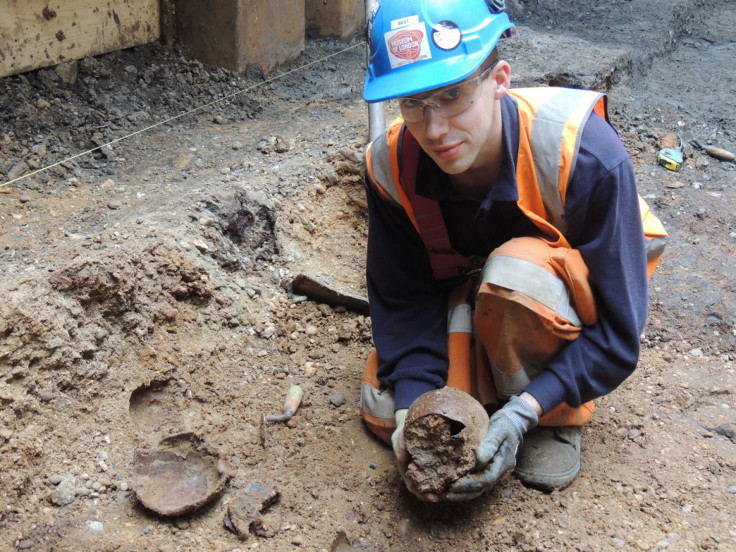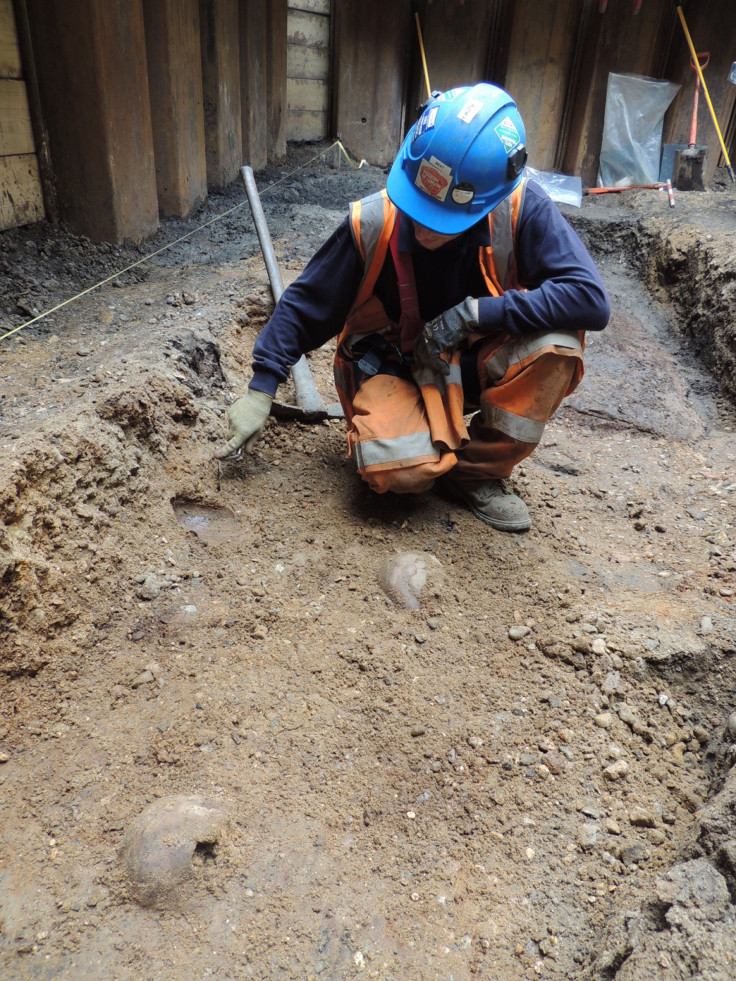Roman Skulls Found Under London Railway Station, ‘Another Piece In The Jigsaw’ Of City’s History [PHOTOS]

Workers building a new railway in London have unearthed about 20 skulls that date back to Roman times.
Found under a utility tunnel below Liverpool Street, the skills were found underneath a 16th century Bedlam burial ground where 3,000 skeletons will be removed in a major dig next year, according to a Crossrail statement.
“This is an unexpected and fascinating discovery that reveals another piece in the jigsaw of London’s history,” lead archaeologist Jay Carver said, adding that this isn’t the first time skulls have been discovered in the area. “We now think the skulls are possibly from a known Roman burial ground about 50 meters up river from our Liverpool Street station worksite. Their location in the Roman layer indicates they were possibly washed down river during the Roman period.”
The skulls were found clustered together 20 feet underground along with some Roman pottery. Archaeologists first believed the skulls were decapitated heads from British Queen Boudicca's troops during her rebellion against Roman occupation in the year 60. But now, experts say they were from a Roman cemetery that was eroded by the Walbrook River, a body of water that now lies completely underground after it was paved over in the 15th century.



While the skulls have yet to be dated, they most likely come from the 3rd and 4th centuries AD, when Romans buried their dead instead of cremating them, the BBC reports.
"It's relatively unusual to find so many concentrated [in one area] when you're not in a graveyard. We're 100 yards outside the Roman city walls," Nicholas Elsden from the Museum of London Archaeology told the BBC. "What we're looking at here is how the Romans viewed their dead. You wouldn't imagine modern burial grounds being allowed to wash out into a river."
Further examination will reveal exactly how the 20 or so Romans died, but experts say it doesn’t look like foul play. Chemical markers on the skulls’ teeth can reveal where the people came from and what they ate. Sex and age can also be determined with further investigation.
"Forensic studies show that when the body disintegrates near a watercourse, the skull travels furthest, either because it floats or it can roll along the base of the river,” Don Walker, an osteologist also from the Museum of London Archaeology, said. "They were possibly buried in an area where there wasn't much land available. At the moment it looks as though they've collected together through natural processes."
This isn’t the first find Crossrail workers uncovered in the past few months. A 9,000-year-old ‘tool-making factory’ with 150 pieces of flint, a 16th century gold coin and 3,000 skeletons were also found.
© Copyright IBTimes 2025. All rights reserved.






















